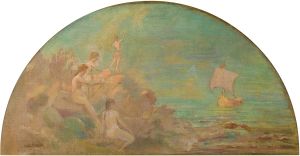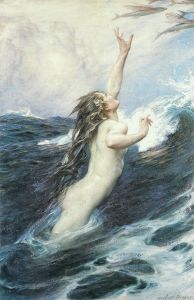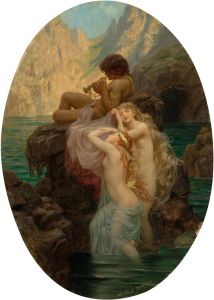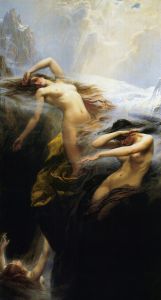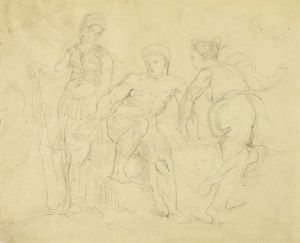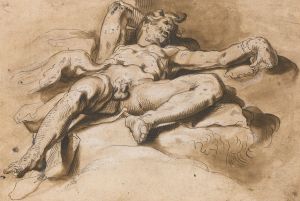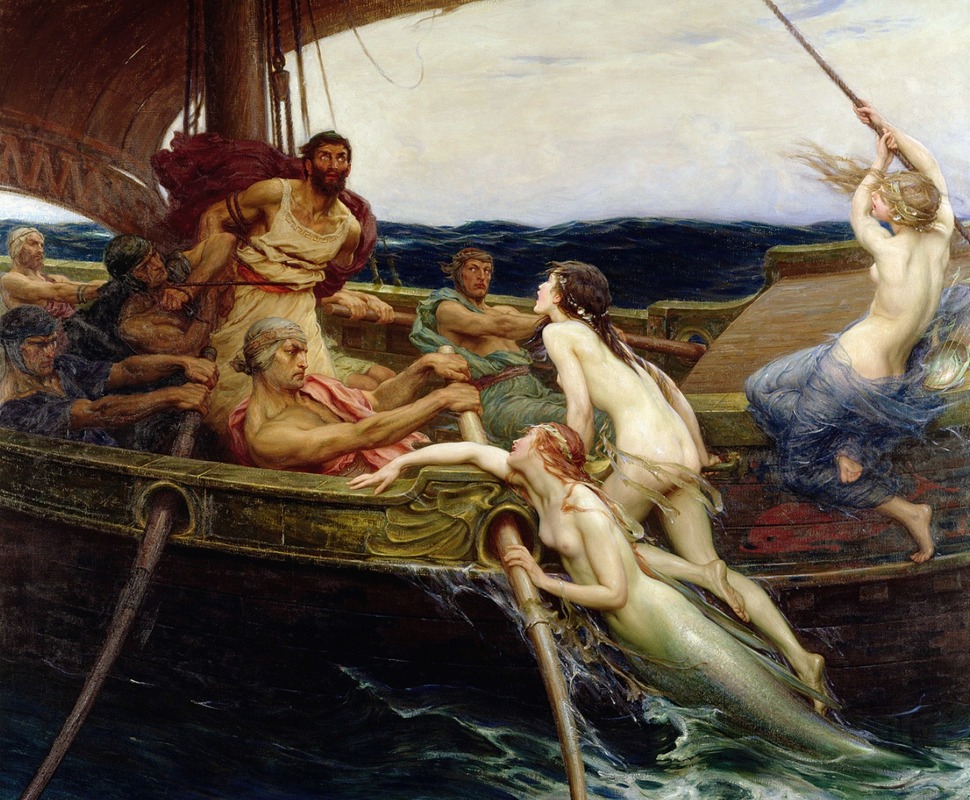
Ulysses And The Sirens
A hand-painted replica of Herbert James Draper’s masterpiece Ulysses And The Sirens, meticulously crafted by professional artists to capture the true essence of the original. Each piece is created with museum-quality canvas and rare mineral pigments, carefully painted by experienced artists with delicate brushstrokes and rich, layered colors to perfectly recreate the texture of the original artwork. Unlike machine-printed reproductions, this hand-painted version brings the painting to life, infused with the artist’s emotions and skill in every stroke. Whether for personal collection or home decoration, it instantly elevates the artistic atmosphere of any space.
"Ulysses and the Sirens" is a notable painting by the British artist Herbert James Draper, completed in 1909. Draper, who was active during the late 19th and early 20th centuries, is renowned for his mythological themes and his ability to capture the human form with great skill and sensitivity. This particular work is one of his most famous and is often cited as a prime example of his artistic style and thematic interests.
The painting depicts a scene from Homer's epic poem, "The Odyssey," which tells the story of Ulysses (or Odysseus, as he is known in Greek mythology) and his perilous journey home after the Trojan War. In this scene, Ulysses is shown tied to the mast of his ship, a precaution he took to resist the enchanting songs of the Sirens. The Sirens, mythological creatures often depicted as part woman and part bird, are known for their irresistible singing, which lured sailors to their doom. Draper’s portrayal captures the dramatic tension of the moment, with Ulysses struggling against his bonds as the Sirens surround him.
Draper's composition is both dynamic and dramatic. Ulysses is centrally positioned, his muscular form contrasting with the ethereal beauty of the Sirens. The Sirens are depicted as beautiful women with wings, emphasizing their allure and otherworldly nature. The use of light and shadow in the painting highlights the tension between Ulysses' human vulnerability and the supernatural allure of the Sirens. The sea, a crucial element of the narrative, is depicted with a sense of movement and depth, adding to the overall drama of the scene.
The painting is housed in the Ferens Art Gallery in Hull, England. It was acquired by the gallery in 1910, shortly after its completion, and has since been a significant piece in their collection. Draper's work, including "Ulysses and the Sirens," is often associated with the late Victorian and Edwardian fascination with classical mythology and the human form. His attention to detail and ability to convey emotion through composition and color make this painting a standout example of his oeuvre.
Herbert James Draper was part of a broader movement of artists during his time who were interested in classical themes and the revival of mythological subjects. His work is often compared to that of other contemporaries who shared similar interests in mythology and allegory. Draper's ability to blend narrative with aesthetic beauty has ensured that "Ulysses and the Sirens" remains a popular and studied work in the context of British art from this period.
Overall, "Ulysses and the Sirens" exemplifies Draper's mastery of mythological storytelling through art, capturing a timeless narrative with a sense of immediacy and emotional depth that continues to resonate with audiences today.






